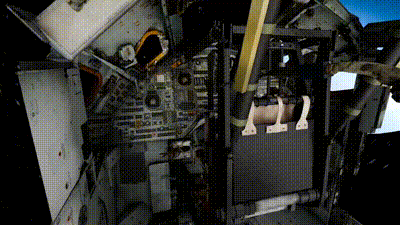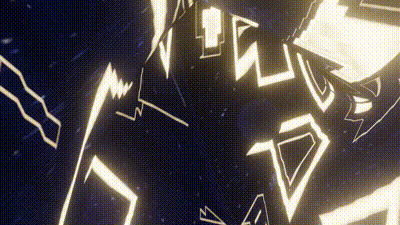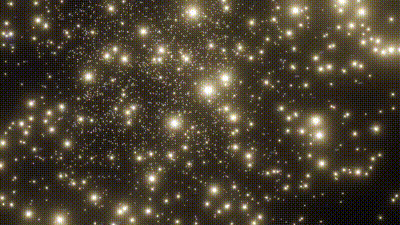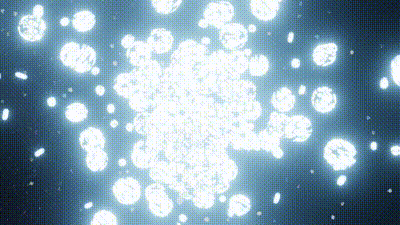Jinge Zhou
Star Rift - An Exploration of Loneliness Across Existential Boundaries
Summary
In the vast silence of space, where stars seem close yet far, my journey into the “Star Rift” project is a blend of personal experience and academic pursuit, exploring the depths of human loneliness. Inspired by the stories of astronauts like Valery Polyakov and Christina Koch, who spent months in space facing extreme isolation, I channel their experiences into my work. This project reflects not only their struggles but also my own encounters with loneliness and the search for connection in an often disconnected world.
Through the fusion of art and technology, I create immersive VR environments that capture the physical and emotional challenges of space travel. These virtual worlds are designed to help astronauts and others in isolated environments process their feelings and build psychological resilience. Each VR experience is a carefully crafted space where users can explore their emotions and find new ways to cope with solitude.
The “Star Rift” project is more than just an academic endeavor; it’s a blend of reflective practice and critical thinking. Drawing from environmental psychology, sociology, and existential philosophy, it highlights the potential of VR to address the mental health challenges of prolonged isolation. This work is my way of contributing to the ongoing human quest for meaning and connection, bridging the gap between the cosmic and the everyday, the personal and the universal.
Through this project, I aim to shed light on the silent struggles of modern-day explorers and to offer innovative solutions that support their mental and emotional well-being.
Additional info
When I think about my approach to practice, I am reminded of moments of profound inspiration. I love digesting information and closely following contemporary social trends, which drives me to continually deconstruct society and understand people’s real needs and unfulfilled desires. This motivation has been the foundation for my work on the “Star Rift” project.
Echoes from the Abyss
Throughout this research, I delved into the profound isolation experienced by astronauts, drawing parallels with deep-sea divers, polar scientists, international students, and Tibetan soldiers. The insights gained from these comparisons have illuminated the unique and common aspects of loneliness in extreme environments. The key findings highlight the significance of psychological resilience, the impact of environmental factors, and the importance of reflective practices.
Firstly, the study underscores the profound psychological impact of prolonged isolation on astronauts, emphasizing the need for comprehensive support systems that address their mental and emotional well-being. The analysis revealed that isolation in space, much like in other extreme environments, exacerbates feelings of loneliness, anxiety, and existential dread. However, it also highlighted the potential for personal growth and self-discovery through reflective practices and psychological resilience.
Secondly, the VR design emerged as a potent tool to simulate and address the psychological challenges of isolation, providing a therapeutic space for introspection and emotional processing. By integrating elements such as light, sound, and spatial dynamics, the VR modules aim to evoke the psychological states experienced by astronauts, offering a space for them to confront and process their feelings of isolation.

Future Horizons: Giving Voice to the Isolated
Looking ahead, the potential applications of this research in future deep space exploration are promising. As missions to Mars and beyond become more feasible, understanding and addressing the psychological needs of astronauts will be critical. The VR modules developed in this study can be adapted and refined for use in long-duration space missions, providing astronauts with a tool to manage their mental health and maintain emotional resilience.
Beyond space exploration, this research has broader implications for supporting isolated groups on Earth. The VR environments can be used to help individuals experiencing extreme loneliness, such as those in remote locations, isolated communities, or even during pandemics. By giving voice to the isolated, this research emphasizes the importance of empathy and connection in addressing the universal human experience of loneliness.
From the philosophical underpinnings of existentialism to the practical applications of environmental psychology, this research has woven together a rich tapestry of understanding. The narratives and experiences of individuals in extreme environments have provided a profound lens through which to explore the depths of human resilience and the search for meaning.
As we venture further into the unknown, both in space and in our understanding of human psychology, it is crucial to continue exploring innovative solutions to support those who face profound isolation. This study is a step towards that future, giving voice to the isolated and illuminating the path towards greater human connection and understanding.
A Journey through the Void

Space Capsule
Isolation
I have been adrift in the vastness of space for what feels like an eternity, though it has only been a long ten months. My existence is confined within the familiar intricacies of buttons and switches, each one a testament to human ingenuity, yet a stark reminder of my solitude. The cold windows offer fleeting glimpses of drifting stars, each a distant reminder of the world I left behind. The metallic hum of the spacecraft's machinery is my constant companion, a mechanical lullaby underscoring the silence of space. The dim, monotonous lights cast long shadows, amplifying the sense of loneliness. As I float weightlessly, my thoughts wander through a labyrinth of ideas, reflections, and memories that have become my steadfast companions.

In this enclosed space, day and night blur together, broken only by the hum of the life support systems and the occasional crackle of the communication console. The narrow windows offer glimpses of the endless void outside, where stars drift aimlessly, starkly contrasting with the confined environment of the capsule. Here, the familiar becomes a prison, the known turns into the unknown, and the mind starts to play tricks, weaving together strands of reality, dreams, and fears.

Void Shuttle
Lost
Gradually, I sense the spacecraft accelerating, and it feels as though I am being drawn into a black hole. My consciousness shifts and warps with the increasing speed. The starry sky, once a distant and serene canvas, transforms into a blur of moving light, rushing towards me at an alarming speed. The capsule begins to shudder, and the space around me starts to warp, gravity tearing it apart and breaking it into fragments that float around me. My consciousness, too, begins to fragment, the sense of control I once had slipping away, replaced by an overwhelming chaos that swallows me whole.
Within the black hole, I enter a surreal transition, finding myself in a fluid, tunnel-like space. The world becomes an abstract dance of light and swirling vortices.

space travel
Blank

Across the Stars
Slowly, my speed decreases. As the chaos subsides, I find myself in a new realm, surrounded by an endless void where light dances. Lines weave together, creating intricate patterns like a kaleidoscope, both mesmerizing and disorienting.

Starry Space
The lines intersect and diverge, forming a complex network that pulses with its own life force. It feels as though the universe itself is speaking to me, revealing the interconnectedness of all things, the lines that bind us to the cosmos and to each other.

Call of the Void
In this ethereal and surreal environment, my thoughts begin to settle. Everything I see around me, though abstract, offers a strange comfort.

Atomic Void
